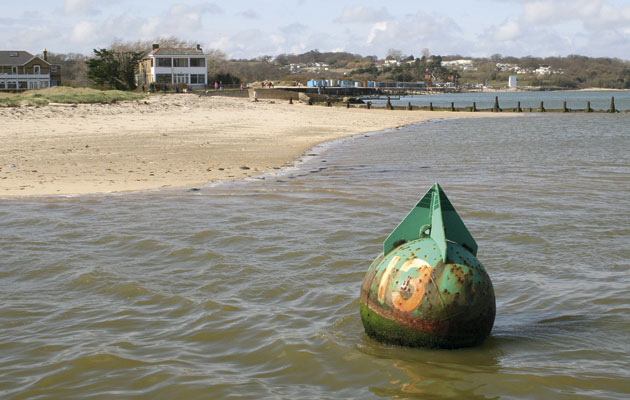Tom Cunliffe has assessed hundreds of sailors for the RYA Yachtmaster exam. He shares a few skipper's tips with us...
Skipper’s tips
Look abeam

A sideways glance will tell you how much way the yacht is making on the final approach to the mooring buoy
When you’re at the helm picking up a mooring – power or sail, it makes no difference – there’s a natural tendency to become focussed on the foredeck action. Obviously, this needs your full attention, but concentrating on what’s going on up front can lead to problems. Looking ahead, bearings are not changing appreciably, everything is foreshortened and there’s nothing for our senses to get a grip on to judge speed. This means it’s all too easy to lose way before reaching the buoy under sail, or to run past it under power. The former is a shame. The latter can lead to domestic fury if your better half has actually managed to hook the buoy, only to be left hanging on for grim death or letting go and losing the boathook.
The answer is to make a point of looking abeam as you come close up to the mooring. The bearings of objects to one side of you are changing most rapidly, your in-built personal computer can process the data and you can’t miss how fast you’re going. Under power, you can judge your speed to a nicety this way, especially if you’re stemming a tide. Under sail, it will show you if you’re losing way too fast.
This might not sound like advanced boat handling, but I know from running numerous exams that it’s often forgotten. One candidate actually asked a crewman to clear his view of the speed log when he was 10 yards from a mooring so he could judge his way. He missed the buoy, and failed – not for muffing the manoeuvre, but for being no seaman.
Don’t go too close
A picture may not always tell a thousand words, but this one has plenty to say about buoyed channels. In fact, the marker is moored at the edge of a trough scoured out by the tide in a harbour entrance. Its shipmates further to seaward are in flatter country. Cutting very close to a buoy like this at any time other than High Water is often bad advice. Unless you’re a local, you can’t be sure how far it has swung on its tether towards the shallows. Better safe than sorry. Give channel markers as wide a berth as traffic allows, especially on a falling tide.
Forget the polish
A proper vintage sextant is a beautiful thing. It’s tempting to reach for the Brasso once a month and give it a good old shine. But such enthusiasm extended over the years slowly rubs out the graduations of the scale, rendering the instrument useless. However much you’re itching to give her a shine, resist it. You can give the telescope a buff-up now and again, though. Mine’s a disgrace at the moment and I’m searching for a can of the right stuff. Sadly, the times when you could buy it on the high street are long gone.






